Patchwork Patterns: Different Styles Explored
Welcome to the vibrant world of patchwork patterns, where creativity meets tradition in a tapestry of colors, textures, and stories. Imagine a quilt, not just as a piece of fabric, but as a canvas that tells a tale through every stitch and patch. This article delves into the diverse styles of patchwork, exploring their unique characteristics, cultural significance, and the innovative techniques that have transformed this age-old craft into a modern phenomenon. Whether you're a seasoned quilter or just curious about this art form, there's something fascinating here for everyone. So, grab a cup of tea and let's embark on this colorful journey!
Understanding the origins of patchwork patterns provides insight into their evolution. Patchwork has a rich history that dates back centuries, with roots in various cultures around the globe. It began as a practical solution to utilize leftover fabric scraps, turning necessity into art. In many societies, patchwork was not just a way to keep warm but also a means of storytelling, where each piece represented a moment, a memory, or a cultural identity. From the intricate quilts of the American South to the vibrant textiles of Africa and Asia, patchwork reflects the heritage and creativity of its makers.
There are numerous styles of patchwork patterns, each with unique characteristics that captivate the eye and stir the imagination. Some patterns are deeply rooted in tradition, while others are modern interpretations that push creative boundaries. The beauty of patchwork lies in its versatility, allowing artists to express their individuality through various techniques and materials. Let's dive into some popular types of patchwork patterns that have stood the test of time.
Traditional quilt patterns have a rich heritage, often passed down through generations. These designs are not just visually appealing; they are imbued with meaning and history. Each quilt tells a story, from the materials used to the patterns chosen. For instance, the Log Cabin and Nine-Patch designs are classic examples that showcase the craftsmanship and storytelling elements inherent in quilt making.
The Log Cabin style is a quintessential patchwork pattern that symbolizes warmth and home. Originating in the 19th century, this design features strips of fabric arranged to resemble a log cabin. The pattern's beauty lies in its simplicity and versatility, allowing for endless variations. Traditionally, the dark center of the cabin represents the hearth, while the surrounding light logs symbolize the home. As you stitch together each piece, you’re not just creating a quilt; you’re weaving a narrative of comfort and belonging.
The Nine-Patch design is another beloved traditional pattern, known for its straightforward construction and emotional resonance. Composed of nine squares arranged in a grid, this pattern is often a quilter's first project. Its simplicity allows for numerous variations, making it a favorite among both beginners and experienced quilters. Each square can represent different emotions and memories, creating a quilt that is not just a decorative piece but a cherished keepsake.
In today’s world, patchwork is evolving in exciting ways. Modern interpretations of patchwork patterns are pushing boundaries, incorporating new materials, techniques, and styles. From bold colors to unconventional shapes, contemporary patchwork is a reflection of today's diverse society. Designers are experimenting with everything from recycled fabrics to digital prints, creating unique pieces that challenge traditional notions of quilting.
Patchwork patterns have made a significant impact in the fashion industry, with designers embracing this art form to create stunning and sustainable collections. The fusion of patchwork and fashion not only celebrates creativity but also promotes a more eco-conscious approach to clothing. As consumers become more aware of their purchasing choices, patchwork offers a way to express individuality while being mindful of the environment.
Sustainability is a key focus in fashion today, and patchwork techniques are at the forefront of this movement. Designers are increasingly using leftover fabrics and upcycled materials to create garments that are not only stylish but also environmentally friendly. This approach not only reduces waste but also adds a unique charm to each piece, as no two items are ever the same. Imagine wearing a jacket that tells a story of creativity and sustainability!
When it comes to trends, celebrities often lead the way. Public figures have played a significant role in popularizing patchwork styles, showcasing them on runways and red carpets. From bohemian chic to high-fashion statements, patchwork has found its place in the wardrobes of the rich and famous. This influence inspires designers to innovate and reimagine patchwork, ensuring that it remains relevant and exciting in the ever-changing fashion landscape.
Q: What is patchwork?
A: Patchwork is a sewing technique that involves stitching together different pieces of fabric to create a larger design. It can be used in quilts, clothing, and home décor.
Q: How do I start patchwork quilting?
A: To start patchwork quilting, gather your materials, choose a simple pattern (like the Nine-Patch), and begin by cutting your fabric into pieces. There are many tutorials available online to guide you through the process.
Q: What materials are best for patchwork?
A: Cotton fabric is the most popular choice for patchwork due to its durability and ease of handling. However, you can also experiment with other materials like linen, silk, or even recycled fabrics.
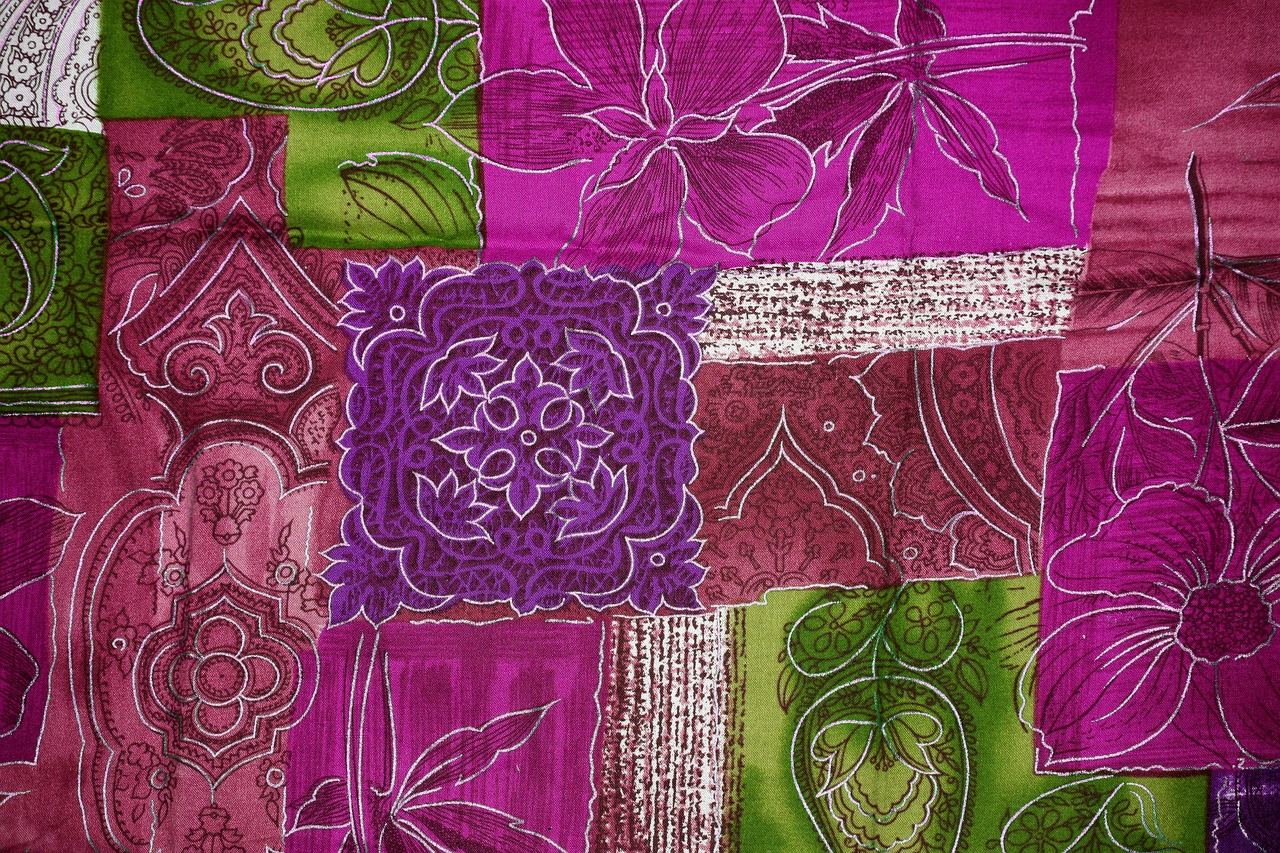
Historical Background of Patchwork
Patchwork is more than just a craft; it’s a tapestry woven with the threads of history, culture, and human emotion. The origins of patchwork patterns can be traced back thousands of years, with evidence of similar techniques found in ancient civilizations across the globe. From the intricate quilts of the American pioneers to the vibrant textiles of Africa and Asia, patchwork has served not only as a means of creating warmth but also as a canvas for storytelling and cultural expression.
In many cultures, patchwork was born out of necessity. People used scraps of fabric to create functional items, ensuring that no material went to waste. This resourcefulness led to the development of unique styles that reflected the local environment and available materials. For example, early European quilt makers often utilized wool and cotton remnants, while Native American quilters incorporated colorful fabrics that told stories of their heritage. Each stitch is a nod to the past, a reminder of the hands that crafted these pieces and the lives they touched.
As we delve deeper into the historical significance of patchwork, we find that it has often been a reflection of societal changes. During the Great Depression in the United States, for instance, patchwork quilts became a symbol of resilience and creativity. Families would come together to create quilts from old clothing, turning what was once seen as waste into beautiful, functional art. This communal effort not only provided warmth but also fostered a sense of unity and purpose during challenging times.
Moreover, patchwork has played a pivotal role in various cultural rituals and ceremonies. In many African cultures, for instance, patchwork is often used in ceremonial garments, symbolizing unity and community. Each piece of fabric can represent a family member or a significant event, turning the garment into a living history. In this way, patchwork transcends mere aesthetics; it becomes a powerful medium for preserving heritage and fostering connections between generations.
Today, the legacy of patchwork continues to evolve, blending traditional techniques with modern innovations. As we explore the diverse styles and techniques that have emerged over the years, it’s essential to remember that every pattern tells a story—one that connects us to our past and shapes our future. The beauty of patchwork lies not only in its visual appeal but also in its ability to unite people across cultures and time periods.
In conclusion, the historical background of patchwork is rich and multifaceted. It serves as a reminder of our shared humanity, illustrating how creativity can flourish even in the face of adversity. As we appreciate the artistry behind patchwork patterns, let us also honor the cultural significance and the stories that each piece carries with it.
- What is the origin of patchwork? Patchwork originated from the need to reuse fabric scraps, and it has been practiced in various cultures around the world for centuries.
- What materials are commonly used in patchwork? Traditional patchwork often uses cotton and wool, but modern patchwork can incorporate a wide range of materials, including synthetics.
- Is patchwork only used for quilts? No, patchwork can be used in various applications, including clothing, home décor, and accessories.
- How has patchwork evolved over time? Patchwork has evolved from a practical necessity to an art form, incorporating modern techniques and materials while still honoring traditional methods.
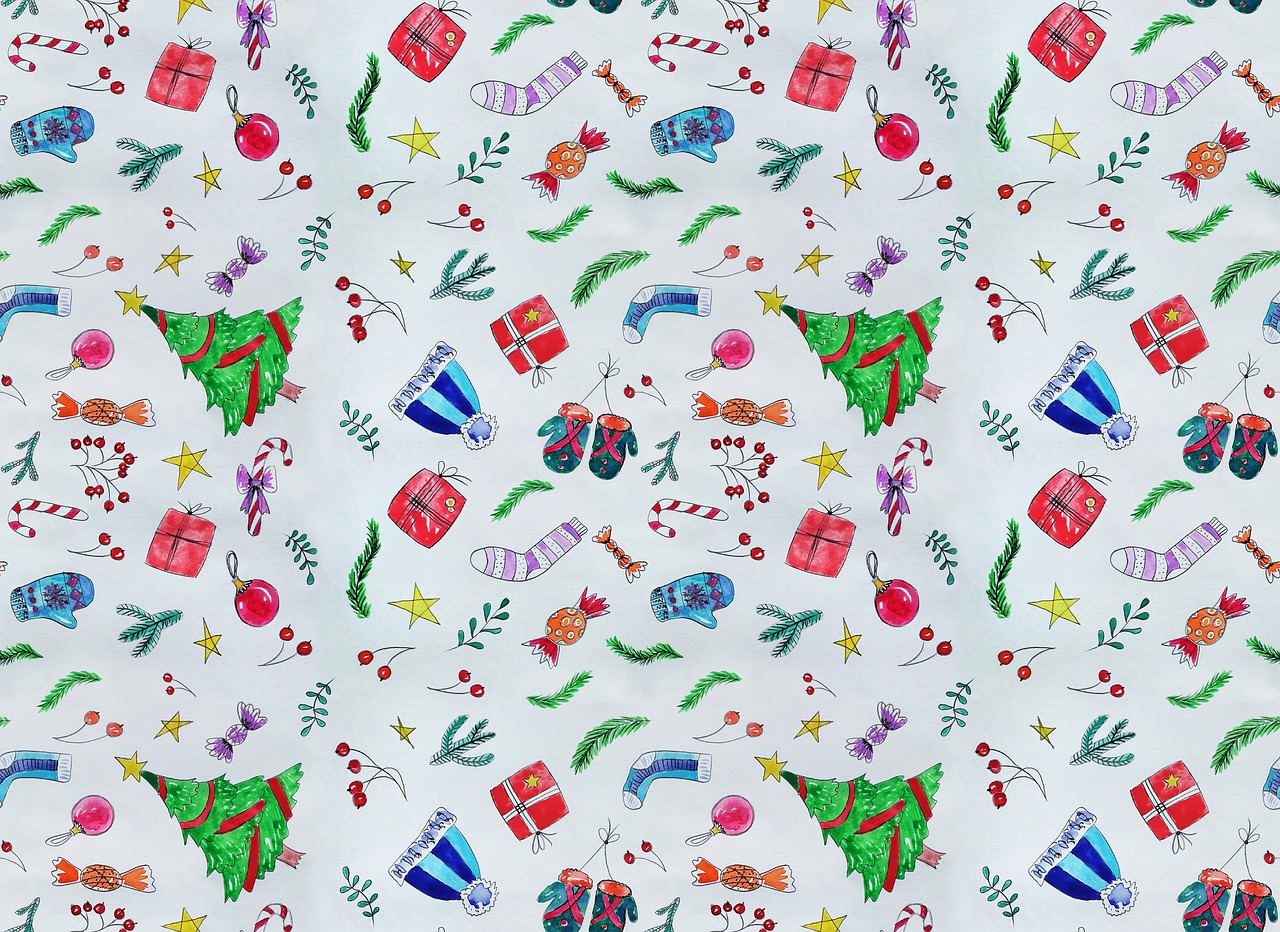
Types of Patchwork Patterns
When you think of patchwork, what comes to mind? Is it the comforting warmth of a quilt draped over a bed, or perhaps the vibrant chaos of a patchwork jacket? The beauty of patchwork patterns lies in their diversity, showcasing a rich tapestry of styles that reflect cultural heritage and personal creativity. From traditional designs passed down through generations to modern interpretations that challenge the status quo, patchwork offers a unique lens through which we can explore artistic expression.
Patchwork patterns can be categorized into several distinct styles, each with its own story to tell. Understanding these types not only enhances our appreciation for this craft but also inspires us to create our own unique pieces. Below, we delve into some of the most popular patchwork patterns that have captured the hearts of artisans and enthusiasts alike.
Traditional quilt patterns are the backbone of patchwork artistry, steeped in history and craftsmanship. These designs often tell a story, whether it’s a family history or a cultural narrative. For instance, the Log Cabin style, with its simple yet profound structure, symbolizes home and hearth, while the Nine-Patch design evokes a sense of community and togetherness.
The Log Cabin style is more than just a pattern; it's a celebration of simplicity and symbolism. Originating from the early American settlers, this design features strips of fabric arranged in a way that resembles the logs of a cabin. The central square often represents the hearth, the heart of the home, while the surrounding strips symbolize the warmth and safety of family. Crafting a Log Cabin quilt allows quilters to express their personal stories through the colors and fabrics they choose, making each piece a unique narrative.
On the other hand, the Nine-Patch design is a favorite for its versatility and ease of construction. Comprising nine squares arranged in a grid, this pattern can be adapted in countless ways. Quilters often experiment with color placement and fabric combinations, resulting in a myriad of interpretations. Whether you’re a beginner or a seasoned quilter, the Nine-Patch serves as a fantastic foundation for exploring the world of patchwork. The emotions it evokes are palpable; it’s a reminder of community, tradition, and the joy of creating something beautiful from seemingly disparate pieces.
As we step into the modern era, patchwork patterns continue to evolve, embracing new materials and techniques. Today's quilters are not just limited to traditional fabrics; they are incorporating unconventional materials like denim, leather, and even recycled plastics into their designs. This innovation not only breathes new life into patchwork but also encourages sustainability in crafting. The boundaries of what can be achieved with patchwork are being pushed further than ever before, allowing for an explosion of creativity!
In summary, the world of patchwork patterns is a vibrant tapestry of history, culture, and innovation. Whether you find solace in traditional designs or excitement in modern adaptations, there’s no denying the beauty and significance of patchwork. Each stitch tells a story, and every quilt is a canvas for personal expression. So, what are you waiting for? Grab some fabric and start your own patchwork journey!
Q: What is the best fabric to use for patchwork?
A: The best fabric for patchwork largely depends on the project, but cotton is a popular choice due to its durability and ease of handling. However, don't hesitate to experiment with different materials!
Q: How do I start a patchwork project?
A: Begin by selecting your fabrics and deciding on a pattern. Cut your fabric into the required shapes and sizes, and then start sewing them together, following the design you've chosen.
Q: Can I use recycled materials for patchwork?
A: Absolutely! Using recycled materials is not only eco-friendly but can also add a unique flair to your patchwork projects. Old clothes, linens, and even fabric scraps can be transformed into beautiful creations.
Q: What are some common mistakes to avoid in patchwork?
A: Some common mistakes include not pre-washing fabrics, which can lead to shrinking, and not measuring accurately. Always take your time to ensure precision for the best results!
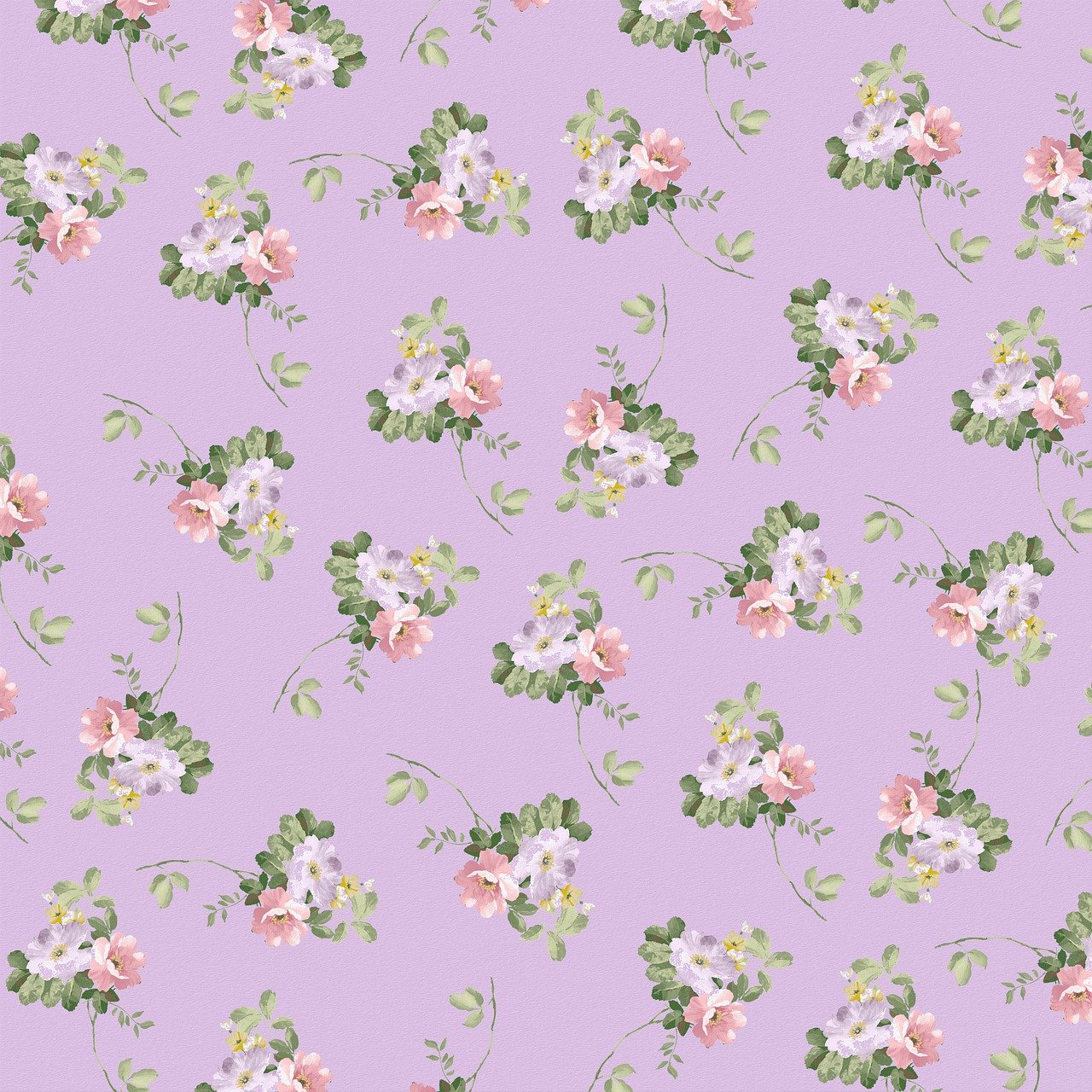
Traditional Quilt Patterns
When we think of , we often envision a beautiful tapestry of history, culture, and storytelling woven together through fabric. These patterns are not just mere designs; they are the heartbeats of the communities that created them. Each stitch tells a story, each color evokes a memory, and every pattern has its own unique significance. Traditional quilt patterns have been passed down through generations, often carrying with them the traditions and customs of the makers. This rich heritage is what makes these quilts not only functional but also deeply meaningful works of art.
One of the most iconic traditional patterns is the Log Cabin quilt. This design is characterized by its distinctive blocks that resemble a log cabin's structure, symbolizing warmth and home. The arrangement of light and dark fabrics within this pattern is said to represent the light of the hearth and the dark of the surrounding woods. The beauty of the Log Cabin quilt lies in its versatility; it can be arranged in countless ways, allowing quilters to express their creativity while honoring the tradition. It’s like telling a story with colors and shapes, where every quilt is a unique narrative.
Another classic is the Nine-Patch design, which is as simple as it is profound. Made up of nine squares, this pattern can be a starting point for many variations, making it a favorite among both novice and experienced quilters. The Nine-Patch design evokes feelings of nostalgia and comfort, reminding us of simpler times. It’s akin to a childhood memory, where each square represents a piece of a cherished moment. The construction of this pattern can be both straightforward and intricate, depending on how the quilter chooses to embellish or modify it.
To truly appreciate traditional quilt patterns, one must understand the techniques used in their creation. Quilters often employ methods such as piecing, where fabric pieces are sewn together, and appliqué, where shapes are stitched onto a background fabric. These techniques not only enhance the visual appeal but also add texture and depth to the quilts. The craftsmanship involved in creating these patterns is a testament to the skill and dedication of the quilters.
In addition to aesthetic beauty, traditional quilt patterns often carry significant cultural meanings. For example, many African American quilts incorporate symbols and motifs that reflect their history and struggles. These quilts serve as a canvas for storytelling, where each stitch is a reminder of resilience and hope. Similarly, Native American quilts often feature patterns that are deeply rooted in their cultural heritage, representing their connection to nature and spirituality.
As we explore the world of traditional quilt patterns, it’s essential to recognize their role in fostering community and connection. Quilting bees, where groups of women (and men) gather to sew together, have been a staple in many cultures. These gatherings are not just about creating beautiful quilts; they are about sharing stories, passing down traditions, and building friendships. It’s a celebration of creativity and collaboration, much like a potluck dinner where everyone brings their unique dish to the table, creating a feast of flavors and experiences.
In conclusion, traditional quilt patterns are more than just decorative elements; they are a reflection of our shared human experience. They encapsulate history, culture, and emotion, inviting us to connect with the past while inspiring future generations of quilters. Whether you’re a seasoned quilter or just starting on this beautiful journey, embracing these traditional patterns can enrich your craft and deepen your appreciation for this timeless art form.
- What is the significance of traditional quilt patterns? Traditional quilt patterns often carry cultural meanings and histories, reflecting the stories of the communities that created them.
- How are traditional quilt patterns made? They are typically made using techniques such as piecing and appliqué, which involve sewing together fabric pieces in intricate designs.
- What are some popular traditional quilt patterns? Some popular patterns include the Log Cabin and Nine-Patch designs, each with its own unique characteristics and symbolism.
- Can I create my own quilt pattern? Absolutely! Quilting is a highly creative process, and many quilters enjoy designing their own patterns based on traditional elements.

Log Cabin Style
The is not just a pattern; it’s a story woven into fabric. Originating in the early 19th century, this iconic design has roots that run deep in the American quilting tradition. Imagine a cozy cabin nestled in the woods, where each log represents a piece of fabric, carefully selected and stitched together to create warmth and shelter. The Log Cabin pattern typically features a central square, known as the "heart," surrounded by strips of fabric that radiate outward, symbolizing the home and family.
One of the most fascinating aspects of the Log Cabin pattern is its symbolism. The arrangement of colors can convey different meanings; for instance, a dark center might represent strength and security, while lighter strips can symbolize hope and new beginnings. This interplay of color and design makes each quilt a unique expression of the maker's emotions and intentions. The construction technique is relatively straightforward, making it accessible for quilters of all skill levels, yet the creative possibilities are virtually limitless. You can play with colors, fabrics, and even the layout to create something truly personal.
Over the years, the Log Cabin style has evolved, with modern quilters experimenting with various interpretations. Today, you might find Log Cabin quilts made from vibrant, contemporary fabrics, or even recycled materials, further enhancing their appeal. The versatility of this pattern allows for both traditional and modern aesthetics, making it a beloved choice among quilters. Whether you prefer a classic look with muted colors or a bold, modern twist, the Log Cabin style can adapt to suit your taste.
To illustrate the different variations of the Log Cabin style, let's take a look at the following table:
| Variation | Description |
|---|---|
| Traditional Log Cabin | Features a central square with strips of fabric arranged in a symmetrical pattern. |
| Courthouse Steps | A variation where the strips are added in a staggered manner, creating a step-like effect. |
| Modern Log Cabin | Uses bold colors and patterns, often incorporating unconventional materials. |
In essence, the Log Cabin style is a beautiful blend of history, symbolism, and creativity. It invites quilters to reflect on their roots while providing a canvas for personal expression. So, whether you're a seasoned quilter or just starting out, consider delving into the world of Log Cabin patterns. You might just find that this timeless design resonates with your own story.
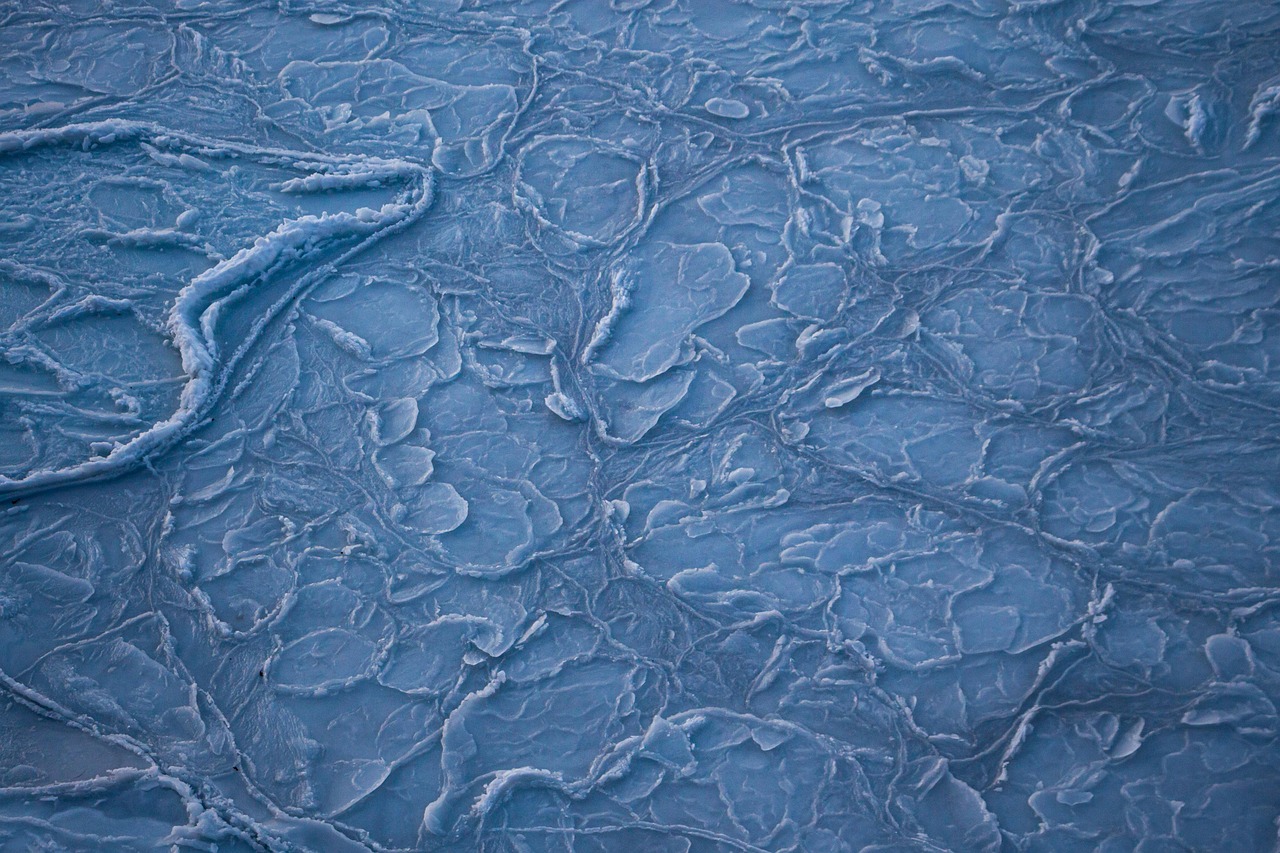
Nine-Patch Design
The is a true gem in the world of patchwork, embodying simplicity and versatility. At its core, this design consists of a grid made up of nine squares, which can be arranged in various ways to create stunning visual effects. The beauty of the Nine-Patch lies not only in its geometric precision but also in the emotional resonance it holds for many quilters. It's like a blank canvas—each quilter can infuse their personality and story into the fabric, making each piece unique.
Historically, the Nine-Patch pattern has roots that stretch back to the early days of quilt-making, often reflecting the cultural and social influences of the time. The pattern is particularly significant in American quilting history, where it was frequently used by early settlers who wanted to make the most of their limited resources. By combining scraps of fabric into this simple yet effective design, they created warmth and comfort in their homes, turning necessity into art.
One of the most captivating aspects of the Nine-Patch design is its ability to evoke a range of emotions. For many, it represents memories of family gatherings, teaching moments passed down through generations, and the joy of creativity. The process of assembling the squares can be meditative, allowing quilters to reflect on their experiences as they sew. It's not just about the final product; it's about the journey of creation, akin to piecing together a life story, one patch at a time.
As quilters explore their creativity, they often experiment with color combinations and fabric types, leading to endless variations of the Nine-Patch design. This adaptability allows for personal expression, and the results can be breathtaking. Some quilters choose to keep it traditional with classic prints, while others embrace modern fabrics, creating a vibrant tapestry that speaks to contemporary aesthetics. The following table highlights some popular variations of the Nine-Patch design:
| Variation | Description |
|---|---|
| Traditional Nine-Patch | Consists of nine squares in a 3x3 grid, often using a mix of solid colors and prints. |
| Double Nine-Patch | A more complex version that incorporates two layers of Nine-Patch, creating depth and texture. |
| Nine-Patch on Point | This design places the Nine-Patch squares on a diagonal, adding a dynamic visual appeal. |
| Scrappy Nine-Patch | Utilizes a variety of fabric scraps, resulting in a colorful and eclectic look. |
In conclusion, the Nine-Patch design serves as a beautiful reminder of the patchwork tradition, where each square tells a story and every quilt becomes a cherished heirloom. Whether you're a seasoned quilter or a beginner, embracing the Nine-Patch pattern can be both a nostalgic and creative experience. So, why not gather your fabric scraps and start your own Nine-Patch project? Who knows what memories and stories you might stitch together!
- What materials do I need to create a Nine-Patch quilt? You will need fabric squares, a sewing machine or needle and thread, scissors, and a quilting ruler for precision.
- How can I customize my Nine-Patch design? You can customize it by choosing different fabrics, colors, and arrangements of the squares to reflect your personal style.
- Is the Nine-Patch design suitable for beginners? Absolutely! The Nine-Patch is a great starting point for new quilters due to its simple construction.
- Can I use this pattern for other projects? Yes! The Nine-Patch design can be adapted for various projects, including bags, table runners, and home decor items.

Modern Patchwork Innovations
In recent years, the world of patchwork has undergone a stunning transformation, blending traditional techniques with contemporary flair. These are not just about aesthetics; they reflect a shift in how we perceive textiles and their role in our lives. Imagine a quilt that tells a story, not just through its patterns but also through the materials used. Designers are now experimenting with a plethora of fabrics, from recycled denim to high-tech synthetics, pushing the boundaries of what patchwork can be.
One of the most exciting aspects of modern patchwork is the incorporation of technology. For instance, digital printing allows artists to create intricate designs that were once impossible to achieve by hand. This means that a simple patch can feature stunning images, intricate patterns, or even personalized messages. The result? A patchwork piece that is not only functional but also serves as a unique piece of art. This fusion of art and technology has opened up a world of possibilities for both creators and consumers.
Moreover, sustainability has become a cornerstone of modern patchwork practices. As consumers become more environmentally conscious, many designers are turning to upcycling and recycling as a means to create their patchwork masterpieces. By sourcing materials from thrift stores or using leftover fabrics from previous projects, they are not only reducing waste but also adding a layer of history and character to their creations. This trend has given rise to the concept of eco-patchwork, where each piece is not just a quilt but a statement about sustainability and creativity.
In addition to these innovations, the community aspect of patchwork has also evolved. Online platforms and social media have created spaces where quilters can share their work, connect with others, and even collaborate on projects. This global exchange of ideas has led to the emergence of new styles and techniques, enriching the patchwork landscape. For instance, the Instagram hashtag #modernquilt has become a treasure trove of inspiration, showcasing everything from minimalist designs to bold, graphic patterns.
As we look to the future, one can only wonder what other innovations await in the realm of patchwork. Will we see more integration of smart textiles that change color or texture? Perhaps the revival of ancient techniques with a modern twist? The possibilities are endless, and that’s what makes the world of patchwork so exciting. It’s a canvas that continually evolves, much like the stories it tells.
- What are some common materials used in modern patchwork?
Modern patchwork often incorporates a variety of materials, including cotton, linen, recycled fabrics, and even synthetic textiles. The choice of material can greatly influence the final look and feel of the patchwork piece. - How can I start my own patchwork project?
Starting a patchwork project can be as simple as gathering old fabrics, choosing a pattern, and getting creative! There are numerous online tutorials and communities that can guide beginners through the process. - Is patchwork only for quilts?
No, patchwork can be used in various applications, including clothing, bags, home decor, and even art installations. Its versatility is one of the reasons it remains popular today.

Patchwork in Fashion
Patchwork patterns are more than just a nostalgic nod to the past; they have firmly established their presence in the modern fashion landscape. Designers around the globe are embracing the eclectic charm of patchwork, transforming it from a humble craft into a high-fashion statement. But what is it about patchwork that has captured the hearts of designers and consumers alike? Is it the vibrant colors, the intricate designs, or perhaps the stories woven into each piece? Whatever the reason, patchwork has become a canvas for creativity, allowing designers to express their artistic visions while also promoting sustainability.
In recent years, the fashion industry has seen a surge in the popularity of patchwork garments. From runway shows to street style, patchwork designs are popping up everywhere. This resurgence can be attributed to several factors, including a growing appreciation for handcrafted items and a shift towards more sustainable fashion practices. Many designers are now incorporating patchwork techniques into their collections, using leftover fabrics and upcycled materials to create unique pieces that stand out in a crowded market.
One of the most exciting aspects of patchwork in fashion is its versatility. Designers can play with various fabrics, colors, and patterns, creating pieces that are not only visually stunning but also rich in texture. For instance, a patchwork jacket might combine denim, cotton, and silk, resulting in a garment that feels as good as it looks. Moreover, the layering of different prints can evoke a sense of nostalgia while simultaneously feeling fresh and modern. This duality is what makes patchwork so appealing; it bridges the gap between tradition and innovation.
Furthermore, patchwork fashion is often seen as a form of storytelling. Each patch can represent a different memory, culture, or experience, allowing wearers to connect with their clothing on a deeper level. Designers like Marc Jacobs and Stella McCartney have showcased patchwork pieces that tell a story, whether it's through the choice of fabric or the arrangement of colors. This narrative aspect adds a personal touch that mass-produced clothing simply cannot replicate.
Another significant trend in patchwork fashion is its alignment with eco-friendliness. As consumers become more conscious of their environmental impact, many are seeking out brands that prioritize sustainability. Patchwork techniques, which often involve recycling and upcycling, perfectly align with this ethos. By utilizing existing materials, designers can reduce waste while creating one-of-a-kind pieces that resonate with eco-conscious consumers. This movement towards sustainable fashion is not just a trend; it's a necessary shift in the industry.
To illustrate the impact of patchwork in fashion, let's take a look at some notable examples:
| Designer | Collection | Patchwork Technique |
|---|---|---|
| Marc Jacobs | Spring/Summer 2022 | Upcycled Denim & Cotton |
| Stella McCartney | Fall/Winter 2021 | Recycled Fabrics |
| Isabel Marant | Resort 2023 | Mixed Prints & Textures |
As we look to the future, it's clear that patchwork in fashion is here to stay. With its rich history, cultural significance, and potential for innovation, patchwork offers a unique blend of artistry and sustainability that resonates with today's consumers. So, whether you're a fashionista looking to make a statement or someone who simply appreciates the beauty of craftsmanship, patchwork has something to offer everyone.
- What is patchwork fashion? Patchwork fashion refers to garments made from various pieces of fabric sewn together, often incorporating different colors and patterns to create a unique design.
- Why is patchwork popular in sustainable fashion? Patchwork techniques often involve using leftover or recycled materials, making them an eco-friendly choice that reduces waste in the fashion industry.
- Who are some notable designers that use patchwork? Designers like Marc Jacobs, Stella McCartney, and Isabel Marant have incorporated patchwork into their collections, showcasing its versatility and appeal.
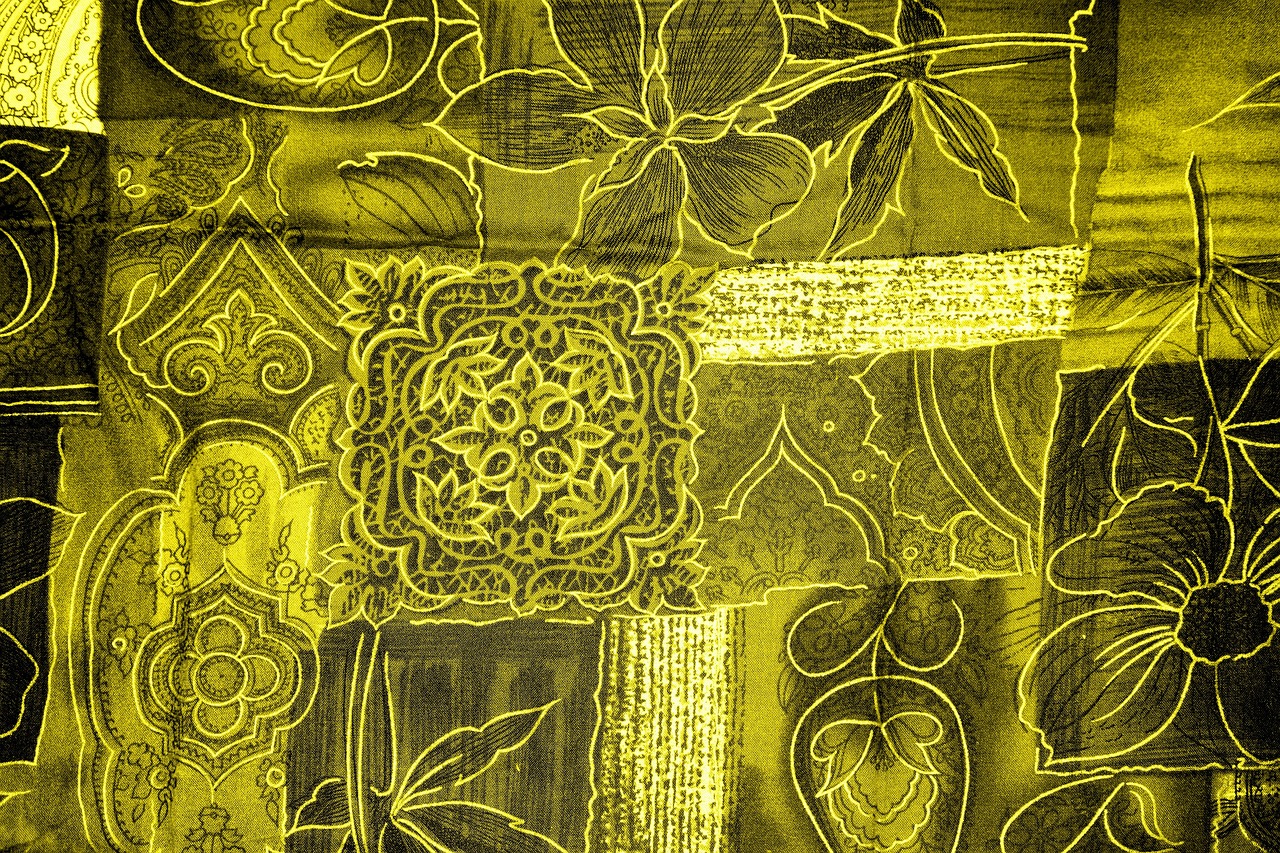
Eco-Friendly Patchwork Trends
In today’s world, where sustainability is more than just a buzzword, eco-friendly patchwork trends are emerging as a vibrant movement within the fashion industry. These trends not only highlight creativity but also emphasize the importance of reducing waste and promoting ethical practices. Imagine a colorful quilt made from scraps of fabric that would otherwise end up in a landfill; this is the essence of eco-friendly patchwork. It's like breathing new life into forgotten materials, transforming them into beautiful, functional art.
One of the most exciting aspects of this trend is the use of recycled materials. Designers are increasingly sourcing fabric remnants, old clothing, and even upholstery to create stunning patchwork pieces. This practice not only minimizes waste but also tells a story. Each patch carries its own history, making the final product a unique tapestry of past lives. For example, a jacket made from reclaimed denim can evoke memories of its previous wearers, while also serving as a fashionable statement. It's like wearing a piece of history!
Furthermore, the rise of upcycling in patchwork fashion is a game-changer. Upcycling involves taking discarded items and transforming them into something of greater value. This approach encourages creativity and resourcefulness. Imagine turning an old pair of jeans into a stylish handbag or a vintage tablecloth into a chic dress. The possibilities are endless! This not only helps reduce the carbon footprint associated with new fabric production but also supports a more circular economy.
To illustrate the impact of eco-friendly patchwork trends, let’s take a look at some key benefits:
- Reduces Textile Waste: By utilizing leftover fabric, patchwork fashion significantly cuts down on the amount of textile waste that ends up in landfills.
- Promotes Ethical Practices: Many designers are committing to ethical sourcing and fair labor practices, ensuring that their creations are not only beautiful but also responsibly made.
- Encourages Individuality: Eco-friendly patchwork allows for unique, one-of-a-kind pieces that reflect personal style, rather than mass-produced clothing.
As the demand for sustainable fashion grows, we are witnessing a shift in consumer attitudes. People are becoming more conscious of their purchasing decisions, seeking out brands that prioritize the planet. This is where eco-friendly patchwork truly shines. It’s not just about creating beautiful garments; it’s about making a statement. When you wear patchwork, you are not only showcasing your style but also your commitment to a more sustainable future.
In conclusion, eco-friendly patchwork trends are reshaping the fashion landscape by marrying creativity with sustainability. As designers continue to explore innovative ways to incorporate recycled materials and upcycling techniques, we can expect to see even more stunning and environmentally friendly creations. So next time you see a patchwork piece, remember that it’s not just a garment; it’s a movement towards a brighter, greener future.
Q: What is eco-friendly patchwork?
A: Eco-friendly patchwork refers to the practice of using recycled or reclaimed materials to create patchwork designs, promoting sustainability and reducing waste.
Q: How can I incorporate eco-friendly patchwork into my wardrobe?
A: You can look for brands that specialize in sustainable fashion, or try DIY projects to upcycle old clothing into patchwork pieces.
Q: Why is patchwork considered sustainable?
A: Patchwork is considered sustainable because it often utilizes leftover materials, reducing textile waste and encouraging recycling and upcycling.
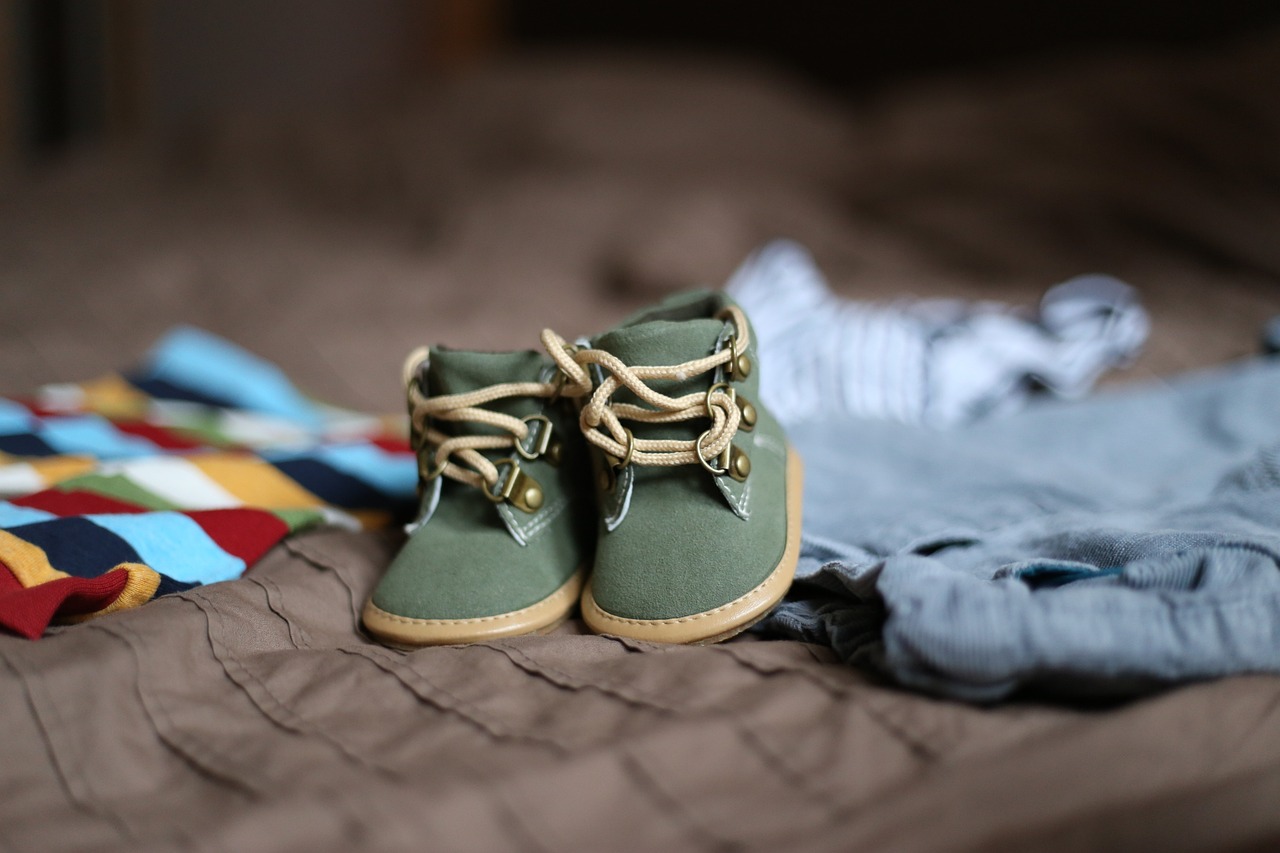
Celebrity Influence on Patchwork Fashion
When it comes to fashion, the influence of celebrities can be both profound and transformative. In recent years, patchwork patterns have made a striking comeback, thanks in large part to high-profile figures who have embraced this colorful and eclectic style. Imagine walking down the street and spotting your favorite celebrity flaunting a stunning patchwork ensemble. It's not just a fashion statement; it's a cultural revival! From red carpets to casual outings, these stars are redefining what it means to wear patchwork.
One of the most notable examples is the iconic Rihanna, who has been spotted in various patchwork pieces that blend traditional craftsmanship with modern flair. Her ability to mix and match different patterns and textures has inspired countless fans to experiment with their own wardrobes. Similarly, Harry Styles has also taken the patchwork trend to new heights, often incorporating vibrant, mismatched fabrics into his outfits. This has not only caught the eyes of fashion enthusiasts but has also encouraged a broader acceptance of bold and unique styles.
But what is it about patchwork that resonates with these celebrities? For many, it symbolizes a break from the norm—a way to express individuality and creativity. The beauty of patchwork lies in its diversity. Each piece tells a story, often reflecting the wearer's personality and experiences. Celebrities have the power to amplify this message, showcasing how fashion can be both personal and political. In a world that often promotes fast fashion and uniformity, patchwork stands out as a celebration of uniqueness.
Moreover, the rise of social media platforms has further fueled this trend. Celebrities share their patchwork looks on Instagram and Twitter, sparking conversations and inspiring their followers to embrace this art form. The hashtag #PatchworkFashion has gained traction, with fans posting their interpretations and DIY projects. This community aspect not only strengthens the bond between celebrities and their fans but also promotes a sustainable approach to fashion, as many individuals turn to thrift stores and upcycling to create their own patchwork pieces.
Interestingly, the influence of celebrities extends beyond just wearing patchwork. Many have collaborated with designers to create exclusive lines that feature patchwork designs. For instance, Jennifer Lopez partnered with a renowned fashion house to launch a collection that showcased the beauty of patchwork, emphasizing its cultural significance and artistic value. This not only elevates the craft but also encourages emerging designers to explore patchwork in their creations.
As we look to the future, it's clear that the impact of celebrity culture on patchwork fashion is here to stay. With their ability to set trends and inspire change, these public figures are not just wearing clothing; they are making statements. Whether it's through a vibrant patchwork jacket or a stunning quilted gown, celebrities are reminding us that fashion is an art form that can reflect our identities and values. So, the next time you see a patchwork piece on the runway or in a magazine, remember that it's more than just a trend—it's a movement, and it's being led by some of the most influential figures in the industry.
- What is patchwork fashion? Patchwork fashion refers to clothing that is made by sewing together pieces of fabric in various patterns and colors, often creating a unique and artistic look.
- Who are some celebrities known for wearing patchwork? Celebrities like Rihanna, Harry Styles, and Jennifer Lopez have been influential in popularizing patchwork fashion through their unique styles and collaborations.
- How can I incorporate patchwork into my wardrobe? You can start by mixing and matching different patchwork pieces, or even try your hand at DIY projects using thrifted fabrics to create your own designs.
- Is patchwork fashion sustainable? Yes! Patchwork often promotes sustainability by encouraging upcycling and the use of leftover fabrics, making it an eco-friendly choice in fashion.
Frequently Asked Questions
- What is patchwork?
Patchwork is a sewing technique that involves stitching together different pieces of fabric to create a larger design. It can be used in quilts, clothing, and various home decor items, showcasing creativity and craftsmanship.
- What are the historical origins of patchwork patterns?
Patchwork has a rich history, dating back to ancient civilizations. It evolved as a practical way to use leftover fabric scraps, but it also became an art form that reflects cultural stories and traditions across different societies.
- What are some popular types of patchwork patterns?
Some popular types of patchwork patterns include the Log Cabin style, Nine-Patch design, and more modern interpretations that incorporate innovative materials. Each style has its unique characteristics and aesthetic appeal.
- How are traditional quilt patterns significant?
Traditional quilt patterns are significant because they carry stories and heritage. They often represent the craftsmanship of the maker and the cultural context in which they were created, making them valuable pieces of art.
- What is the Log Cabin style?
The Log Cabin style is a classic patchwork pattern that symbolizes home and comfort. It is constructed using strips of fabric arranged to resemble a log cabin, often featuring a light and dark fabric contrast to create depth.
- How does patchwork influence modern fashion?
Patchwork has made a significant impact on modern fashion by allowing designers to create unique, sustainable pieces. It promotes recycling and upcycling, making it a trendy choice for eco-conscious fashion enthusiasts.
- What are eco-friendly patchwork trends?
Eco-friendly patchwork trends focus on using recycled materials and sustainable practices in fashion design. These trends aim to reduce waste while creating stylish garments that reflect a commitment to environmental responsibility.
- How have celebrities influenced patchwork fashion?
Many celebrities have embraced patchwork fashion, helping to popularize the style through their clothing choices. Their influence often inspires designers and fans alike to explore patchwork in new and exciting ways.


















